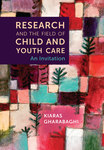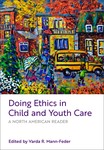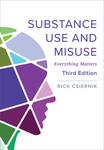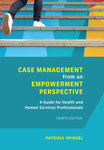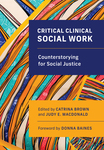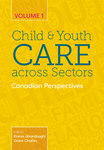We don’t actively support Internet Explorer
It appears that you are using Internet Explorer, which has been discontinued by Microsoft. Support has ended for versions older than 11, and as a result you may face security issues and other problems when using it.
We recommend upgrading to a newer browser such as Firefox, Google Chrome, or Edge for a much better experience across the web.
While this site may work with Explorer, we are not testing and verifying it, so you may run into some trouble or strange looking things.
Protecting Children
Theoretical and Practical Aspects
Edited by Kathleen Kufeldt, Barbara Fallon, Brad McKenzie
Overview
Focusing on children who are subject to welfare intervention, Protecting Children addresses the challenges and issues of the child welfare system and provides foundational knowledge on the theoretical and practical aspects of the field. This edited collection begins with a review of key concepts, including child development, attachment, and resilience theories; social policies; family law; and ethics. Highlighting the translation of theory into practice, the contributors discuss current services and the search for best practice internationally, as well as explore Indigenous child welfare and offer conclusions and recommendations to promote positive outcomes for children and families involved in the system.
Scholars, researchers, and practitioners from across the globe provide insight on a wide range of timely issues, such as the risk of reductionism, limits to predictability, pragmatic issues, as well as the disproportional presence in the care system of minority groups, including Indigenous children, children of new immigrants and refugees, children in LGBTQ communities, and children of the poor. This foundational volume is an important resource for courses in social work and child welfare.
FEATURES:
- Includes contributions from researchers, practitioners, and scholars from Australia, Canada, New Zealand, the United Kingdom, and the United States
- Highlights Indigenous authors and personal stories of service users, and includes figures and tables throughout the text, as well as section introductions and conclusions to situate main theories and concepts for students
Table of Contents
List of Contributors
Acknowledgements
Part I: Key Concepts for Consideration
Introduction to Part I
Chapter 1: Child Development and Attachment: Theories and Application
Kathleen Kufeldt
Chapter 2: Analyzing Social Policy and Its Impact on Child Welfare
Kathleen Kufeldt and Brad McKenzie
Chapter 3: The Law on Parenting After Separation and Child Protection
John-Paul E. Boyd, QC
Chapter 4: Family Law in Canada
John-Paul E. Boyd, QC
Chapter 5: Social Work Ethics and Child Welfare
Elaine Spencer
Chapter 6: Lessons Learned from the Canadian Incidence Study of Reported Child Abuse and Neglect
Nico Trocmé, Barbara Fallon, Bruce MacLaurin, and Nicolette Joh-Carnella
Chapter 7: An Examination of Resilience Theory and Its Relevance for Child Welfare Practice
Kathleen Kufeldt
Conclusion to Part I
Part II: Indigenous Child Welfare
Introduction to Part II
Chapter 8: The First Nations Component of the Canadian Incidence Study of Reported Child Abuse and Neglect, 2008: Lessons for the Current Context
Vandna Sinha
Chapter 9: Lived Experiences of Australian Indigenous Care Leavers: Narratives of Trauma, Resilience, and Survival
Elizabeth Fernandez, Jung-Sook Lee, and Patricia McNamara
Chapter 10: In the Spirit of Wahkootowin: Kinship Affiliation as an Antidote to Divisive Identity Politics for Métis Children in Care
Jeannine Carriere, Julie Mann-Johnson, and Catherine (Cathy) Richardson
Chapter 11: Understanding Fetal Alcohol Spectrum Disorder through the Stories of Nyoongar Families: Helping to Inform Policy and Service Delivery
Robyn Williams
Chapter 12: How Well Do We Practise Culturally Sensitive Care? Voices from Aotearoa / New Zealand
Jill Worrall
Chapter 13: Worlds Colliding or Merging? Sharing Relational Knowledge That Transformed My Practice in Working with Indigenous Children, Youth, Parents, Families, Communities, and Nations
Derek Chewka, with a contribution from Connie Hesjedal
Conclusion to Part II
Part III: Current Services and Outcomes
Introduction to Part III
Chapter 14: Designing a Health Care Record for Children in Care: A Research Study
Cori Thompson
Chapter 15: Non-Government Services and Their Roles: An Australian Example
Kathleen Kufeldt
Chapter 16: Working in the Nonprofit World: Helping Children and Their Families in Alberta, Canada
Jane Matheson
Chapter 17: Responding to Safety Concerns and Chronic Needs: Trends over Time
Barbara Fallon, Nico Trocmé, Joanne Filippelli, Tara Black, and Nicolette Joh-Carnella
Chapter 18: The Risk of Risk: Unpacking the Influence of “Risk” on Child Welfare Decision Making
Jill K. Stoddart
Chapter 19: From a Ward to Award: Pathways to Promote Post-Secondary Success for Students with Experience Living in Care
Lilia Zaharieva, Deborah Rutman, and James Anglin
Chapter 20: Experiences in Foster Care: Does Care Mean Care?
Julie Bishop-Pariseau and Ralvena Tuff
Conclusion to Part III
Part IV: The Search for Best Practice
Introduction to Part IV
Chapter 21: An Australian Agency’s Approach to Achieving Permanency
Sue Tregeagle
Chapter 22: The Search for Best Practice in Canada
Kathleen Kufeldt, Evariste Thériault, and Nico Trocmé
Chapter 23: Good Social Work Practice: The United Kingdom Experience
Roger Bullock
Chapter 24: Deinstitutionalization Efforts of the Child Care System in Europe—Transition from Institutional to Family- and Community-Based Services
Maria Herczog
Chapter 25: Challenges to Best Practice in the United States
Leticia Villarreal Sosa, Adriana Medina, and Myrna McNitt
Chapter 26: A Review of Best Practices in Child Welfare
Alexandra Wright
Conclusion to Part IV
Conclusions and Recommendations


